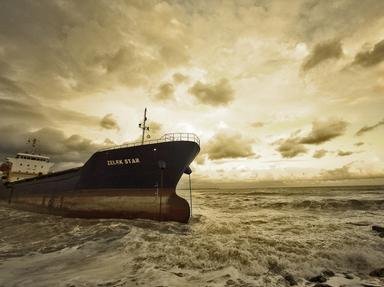Quiz Answer Key and Fun Facts
1. December 20, 1987, Tablas Strait
2. January 30, 1945, Baltic Sea
3. December 4, 1948, Huangpu River
4. September 26, 2002, Gambia River
5. November 25, 1120, English Channel
6. April 27, 1865, Mississippi River
7. December 6, 1917, Halifax, Nova Scotia
8. July 24, 1915, Chicago River
9. September 26, 1954, Tsugaru Strait
10. May 7, 1915, Old Head of Kinsale, Ireland
Source: Author
nmerr
This quiz was reviewed by FunTrivia editor
Bruyere before going online.
Any errors found in FunTrivia content are routinely corrected through our feedback system.

